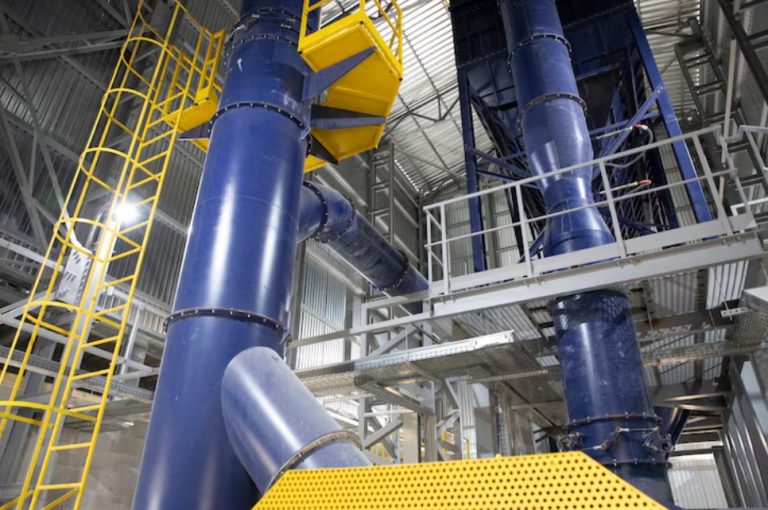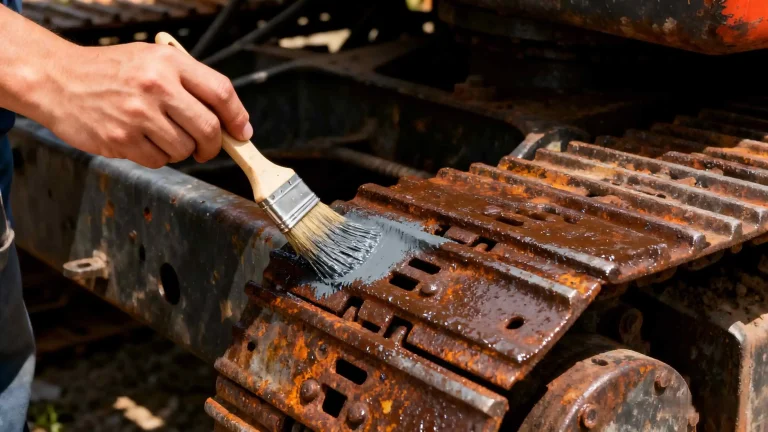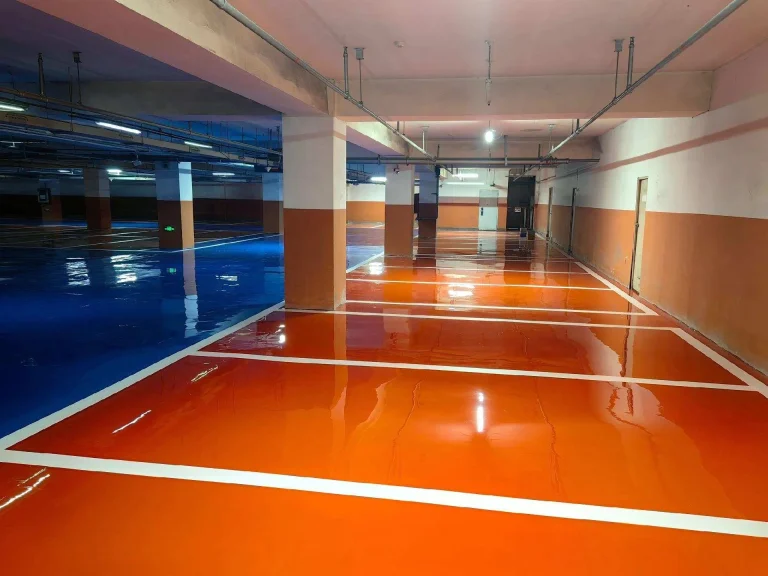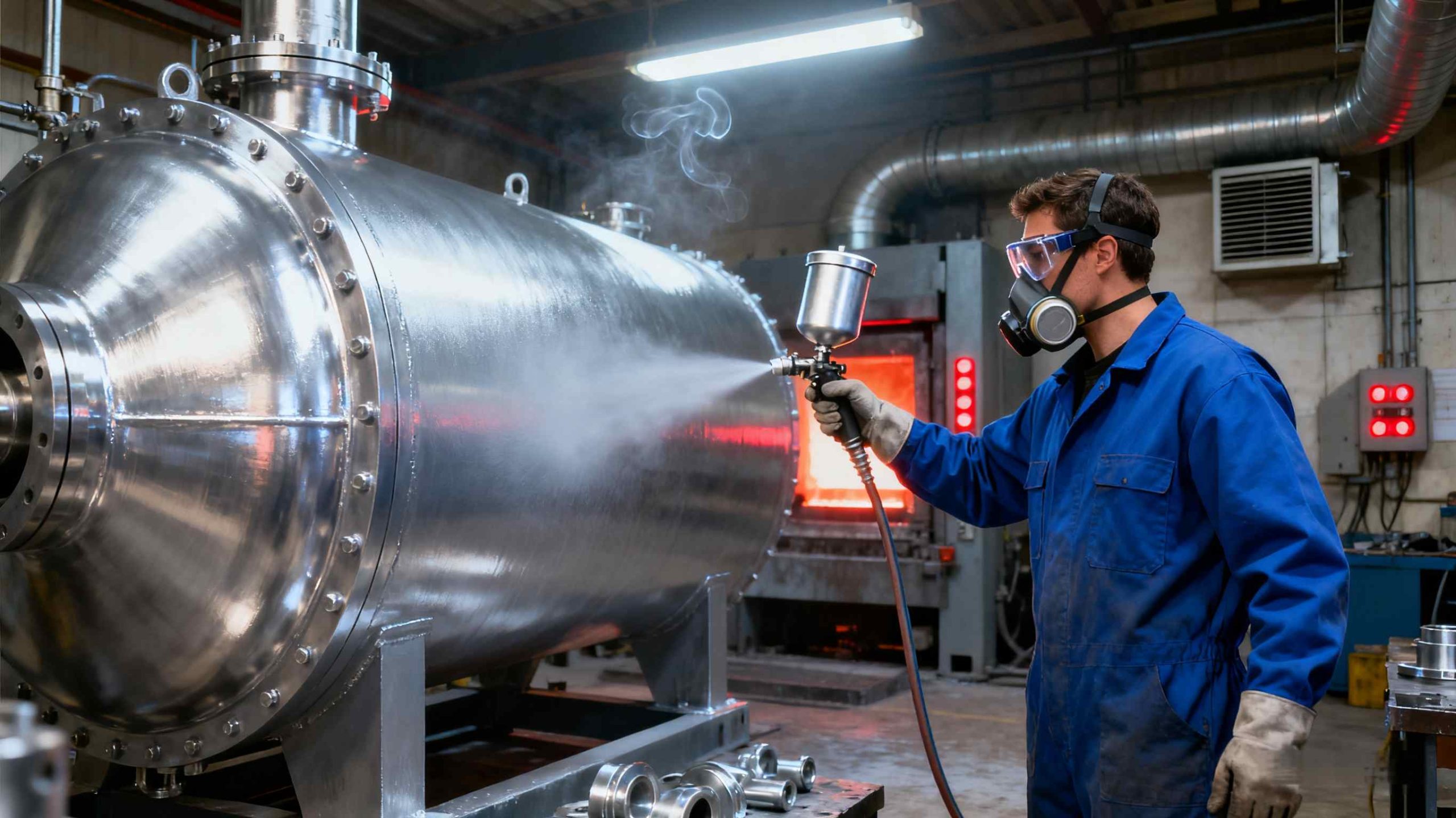
Metal in blistering heat gets hammered hard. Picture a crackling fireplace or a sizzling BBQ grill—without a solid shield, that metal bends, fades, or just crumbles. High-temperature coatings jump in to save crucial equipment from scorching conditions. For folks in fields like automotive, manufacturing, or even those crafting home appliances, these coatings are a lifesaver. This guide dives into why high-temperature coatings are a big deal, their top benefits, how they do their job, and where they’re making a real difference. If you’re working with heat-heavy setups, hang on—this might spare you some major headaches.
What Are High-Temperature Coatings?
High-temperature coatings are rugged paints made to protect surfaces from intense heat, often climbing past 800°C. Regular paints blister or flake when things heat up, but these are built to stay tough. They fend off heat stress, block rust, and keep metal sturdy in places where standard coatings would give out.
Why does this matter? Heat damage in industries leads to costly repairs or gear breaking down. Corrosion alone drains the world of about $2.5 trillion yearly, and high heat makes it worse. These coatings act like a strong guard, stretching the life of things like car exhausts or furnace components. They’re not just a bonus—they’re a must for anyone dealing with metal in hot environments.
Here’s what sets them apart:
They take on flames up to 800°C without breaking.
They keep surfaces looking clean, no dulling or peeling.
They grip tight for steady protection.
They hold up in harsh conditions without quitting.
I saw this at a pal’s workshop once. A coated furnace part outlasted an uncoated one by years. It’s the kind of thing that makes you tip your hat to the science.
Key Benefits of High-Temperature Coatings
These coatings don’t just handle heat—they bring a bunch of perks that make them essential for tough jobs. Let’s break down why they’re so valuable, with real-life examples to show it.
Rock-Solid Heat Resistance: Their biggest strength is standing up to wild heat. Whether it’s a fireplace burning bright or a BBQ grill roaring, high-temperature coatings stay firm. Tests show they can handle direct flames up to 800°C without cracking or flaking. This keeps your equipment running strong, even in rough settings.
Rust and Damage Defense: Heat speeds up rust, but these coatings block oxygen and moisture, the main culprits. In car exhaust systems, they stop corrosion from road salts and damp air, saving big on replacements. Industry stats say they can boost part life by up to 50% in tough spots.
Clean Looks and Toughness: Nobody wants a fireplace looking beat-up after one winter. These coatings fight fading and chalking, keeping surfaces sharp. Their strong hold means they don’t peel, even under heat pressure. This blend of style and strength is vital for home appliances and factory gear.
All-Purpose Use: From furnace heads to grill racks, these coatings work on all kinds of surfaces. They’re not picky—put them on steel, cast iron, or other metals, and they deliver. You can slap them on with a spray, brush, or roller, which works for small shops or big plants.
Quick story: I saw a BBQ grill at a buddy’s cookout, still shining after years of use thanks to a high-temperature coating. My old uncoated grill? A rusty disaster. That one hit home.
How High-Temperature Coatings Work
The power of these coatings lies in their clever chemistry. They’re not just paint—they’re a smart mix of materials that take on heat and rust directly. Knowing how they work helps you pick the right one for your needs.
Heat-Tough Formulas
At their heart, high-temperature coatings use strong binders like silicone or ceramics. These don’t fall apart when temperatures soar. Silicone-based ones, for instance, form a flexible but solid layer that handles quick heat changes. Lab tests show they stay tough at 800°C, far beyond what regular paints can do.
Shielding Against Rust
These coatings act like a barrier, keeping oxygen and moisture away from metal. This matters because heat makes rust worse, turning solid steel into weak bits. By forming a tight seal, high-temperature coatings cut corrosion rates a lot—some reports show drops of up to 85%. That’s huge for keeping parts in shape.
Holding Firm Under Pressure
Heat makes most paints peel or crack. Not these. Their tight grip keeps them stuck to metal, even when temperatures swing wildly. This is critical for things like furnace racks that heat up and cool down repeatedly. The coatings stay in place, giving reliable protection.
Real-World Performance
In practice, this means you can count on them. Take a heating stove: a coated burner head resists warping and rust after thousands of heat cycles. Field data shows coated parts lasting 10-15 years in hot environments, compared to just 2-3 years for uncoated ones. That’s staying power you can trust.
Applications of High-Temperature Coatings
High-temperature coatings stand out where heat never stops. They’re used in factories and homes, protecting key parts. Here’s where they make the biggest impact, with real examples to prove it.
Fireplaces and Heating Stoves
Fireplaces and stoves are perfect for these coatings. Burning logs can push temperatures past 600°C, enough to ruin bare metal. High-temperature coatings keep fireboxes and grates solid, stopping cracks and rust. I saw this at a cabin once—a coated fireplace looked brand-new after years of heavy use. An uncoated one nearby? It was a peeling mess.
BBQ Grills and Outdoor Cooking
BBQ grills deal with heat, grease, and weather. These coatings protect racks and burners, keeping them working and looking good. They fight off charring and rust from outdoor cooking. Industry numbers show coated grills lasting up to 7 years longer than uncoated ones, even in wet climates.
Furnace Heads and Racks
In factories, furnace heads and racks face constant heat. These coatings stop wear and corrosion, keeping furnaces running smooth. A plant I read about saved thousands by coating their furnace parts, avoiding constant replacements.
Automotive Exhaust Systems
Car exhausts battle heat, road salts, and moisture. High-temperature coatings protect pipes and mufflers, stretching their life. Auto tests show coated exhausts with 50% less rust after 5 years compared to uncoated ones. That’s a big deal for carmakers and mechanics.
Here’s a table summing up the main uses:
| Application | Conditions Faced | Why Use High-Temperature Coatings? | Typical Lifespan Boost |
| Fireplaces | Direct flame, high heat | Stops cracking, rust | 10-15 years |
| BBQ Grills | Heat, grease, weather | Fights charring, corrosion | 5-7 years |
| Furnace Heads | Constant thermal cycles | Prevents wear, oxidation | 8-12 years |
| Exhaust Systems | Heat, salts, moisture | Cuts corrosion, extends life | 5-10 years |
These uses are backed by years of real-world results. But a quick tip: clean surfaces before coating. Skipping prep can ruin the bond, and I’ve seen projects flop because of it.
Introducing Konaz: Your Trusted High-Temperature Coatings Supplier
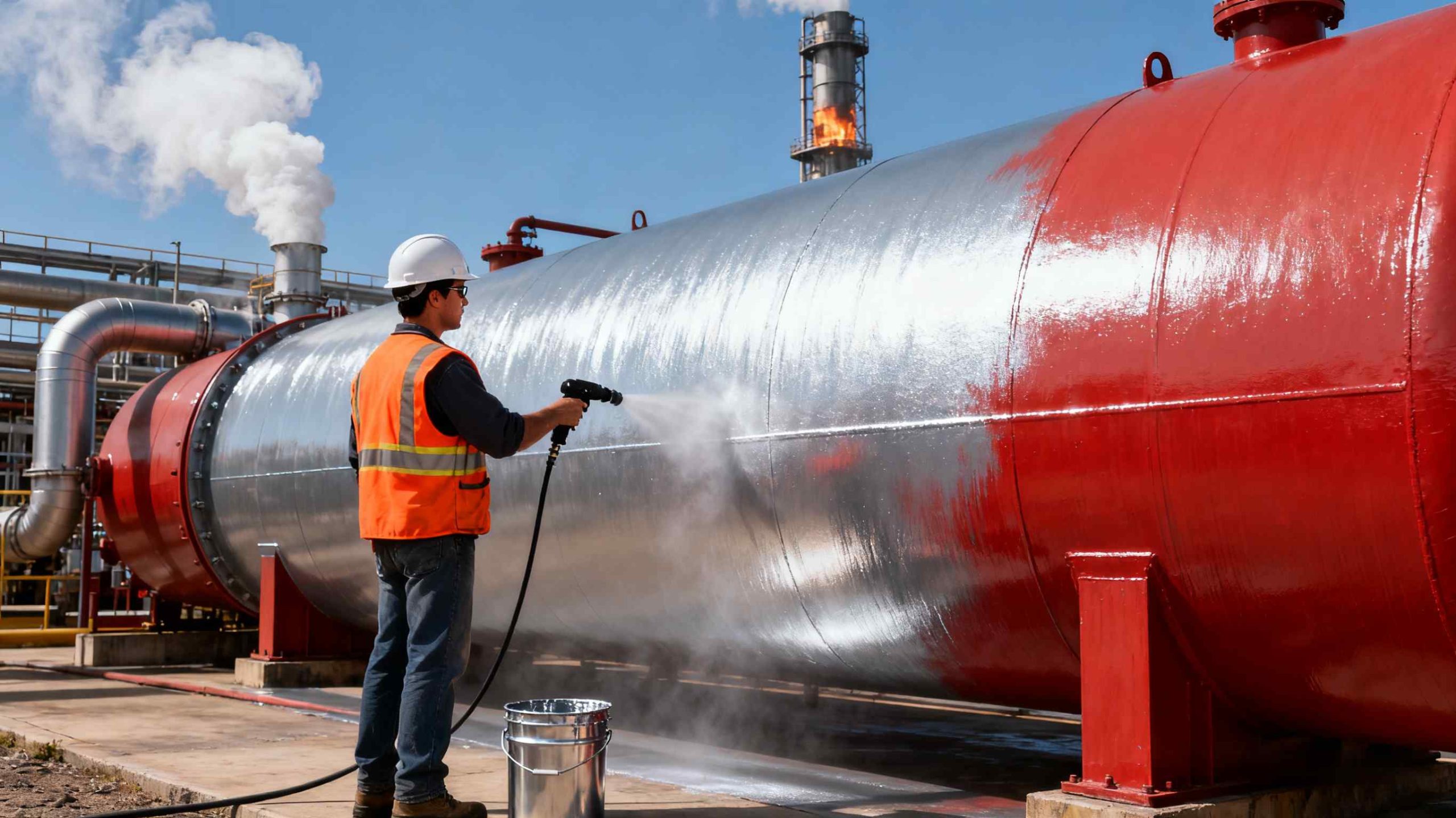
When you need high-temperature coatings, Konaz Technology Co., Ltd. is a name to know. Based in Foshan, China, they run a 3,000-square-meter plant with over 30 high-tech machines, churning out up to 1,000 tons of coatings a year. Their high-temperature coatings are built for tough jobs, ideal for fireplaces, BBQ grills, furnace heads, and exhaust systems.
What makes Konaz different? Their coatings handle flames up to 800°C, resist fading and peeling, and stick tight to metal. You can apply them with a spray, brush, or roller, making them practical for any task. Konaz is all about quality and fresh ideas, serving manufacturers, distributors, and OEM partners with solid solutions for heat-heavy work.
Conclusion
High-temperature coatings are more than a shield—they’re a game-changer for gear in intense heat. They protect fireplaces, stretch the life of car exhausts, and save money by fighting rust and wear. Knowing their benefits and uses helps industries and homeowners make smart choices. Whether you’re tackling a blazing furnace or a backyard grill, these coatings keep metal strong and looking good. Pick the right one, apply it well, and you’ll see results for years.
Frequently Asked Questions (FAQs)
What are high-temperature coatings, and why do they matter?
High-temperature coatings are tough paints that protect metal from heat up to 800°C. They’re vital for things like fireplaces or exhaust systems, stopping warping and rust. These coatings keep gear running strong and save on repair costs in hot settings.
Where do people use high-temperature coatings most?
They’re big on fireplaces, BBQ grills, furnace heads, heating stoves, and car exhaust systems. High-temperature coatings handle heat and rust, making them perfect for factories and homes where heat’s always a challenge.
How do high-temperature coatings stop damage?
They form a heat-tough shield that blocks oxygen and moisture, cutting rust. They also grip metal tight, avoiding cracks or peeling. High-temperature coatings keep surfaces solid, even in blazing flames.
Are high-temperature coatings easy to apply?
Yeah, you can use a spray, brush, or roller to put them on. This makes high-temperature coatings simple for pros and DIYers. Cleaning the surface first is key to making sure they stick well and last.

